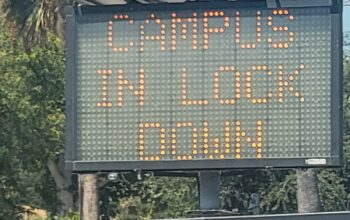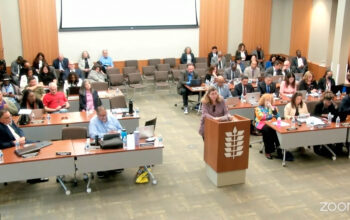A greater emphasis on digital marketing is a part of Pierce’s advertising campaign, for which $100,000 has been allotted each fiscal year for the past several years to show student success.
In recent years, the majority of students are learning about Pierce through social media and the internet rather than radio or television, according to Public Relations Manager Doreen Clay.
“If you look at the schedule covers that we put on the website, Facebook, Twitter, Instagram, our videos, bus banners, interior bus banners and outside shelters, digital banner ads that are on mobile devices and videos on mobile devices, you will always see real students, not clip art,” Clay said.
She said that using real students helps to represent our brand. She locates the students on campus and takes the video or photographs.
Santa Monica College is the only school in its district, unlike Pierce which shares a budget with eight other schools.
On the 2017 – 2018 tentative budget for SMC, advertising received 10 percent of the $13,264,918 for the Contracts and Services.
“Their ad budget is 10 or 20 times what our ad budget is, so we can’t compete with that,” Clay said.
Pierce advertises with Spectrum Cable for mobile, digital and cable television promotions. Over time, Clay said that she has lessened cable television because digital has grown in recent years.
Clay said Pierce doesn’t have an advertising agency that they can hire for millions of dollars. So she shows real students in all Pierce advertisements.
“They’re in chemistry class, they’re riding horses, they’re welding, they’re nursing, they’re doing all this really fun stuff,” Clay said. “So I can kind of demystify the college experience for you on my budget.”
The budget for marketing and advertising is one thirteenth of one percent of the general fund for the college.
“I know that [Doreen Clay] gets supplemented, so sometimes we have ads targeted to a specific educational program,” said Sheri Berger, the acting college president. “Sometimes there might be other pots of money that we can use to fund marketing efforts.”
With Generation Z coming into college, Clay said advertising has to change in order to grab their attention. The district conducted a media preferences survey of a thousand Pierce College students.
“About what people are watching, looking at where they’re going, what they like, what they don’t like. For example, of course they’re watching Netflix, but there’s no advertising right now on Netflix. So I can’t advertise there,” Clay said. “That’s another thing you learn is there’s no one place to find Gen Z, they’re all over the place.”
Because Pierce is one of the nine community colleges in LACCD, it does not compete for students from sister schools. The campus uses geofencing and geotagging to highlight certain areas that we can advertise toward.
“We are geofencing all of our feeder high schools, so students that go to our feeder high schools will be tagged and then when they go elsewhere they will be served our digital ads,” Clay said.
Geofencing is a location-based service in which an app or other software uses GPS, RFID, Wi-Fi or cellular data to trigger a pre-programmed action when a mobile device or RFID tag enters or exits a virtual boundary set up around a geographical location, known as a geofence, according to CIO magazine’s website.
Clay said she uses a variety of methods to reach students and when they see the advertisements for Pierce, she wants them to see who attends the school and what it has to offer.
“I want them to see other people that are just like them that are being successful,” Clay said. “I want them to be unafraid to come here and take a chance and follow their dreams.”
Berger said that even though we have a high transfer rate, it’s not the only area of the school we should focus on promoting and highlighting. Getting information out about certain areas on campus may be difficult, but Berger said that’s something we need to focus on, such as career technology programs.
“We are comprehensive in the education that we are providing,” Berger said. “How do we get that message out and how do we get it to the right people? If you’re a high school student wanting to transfer, how do I get you that message versus the career technical one?”




